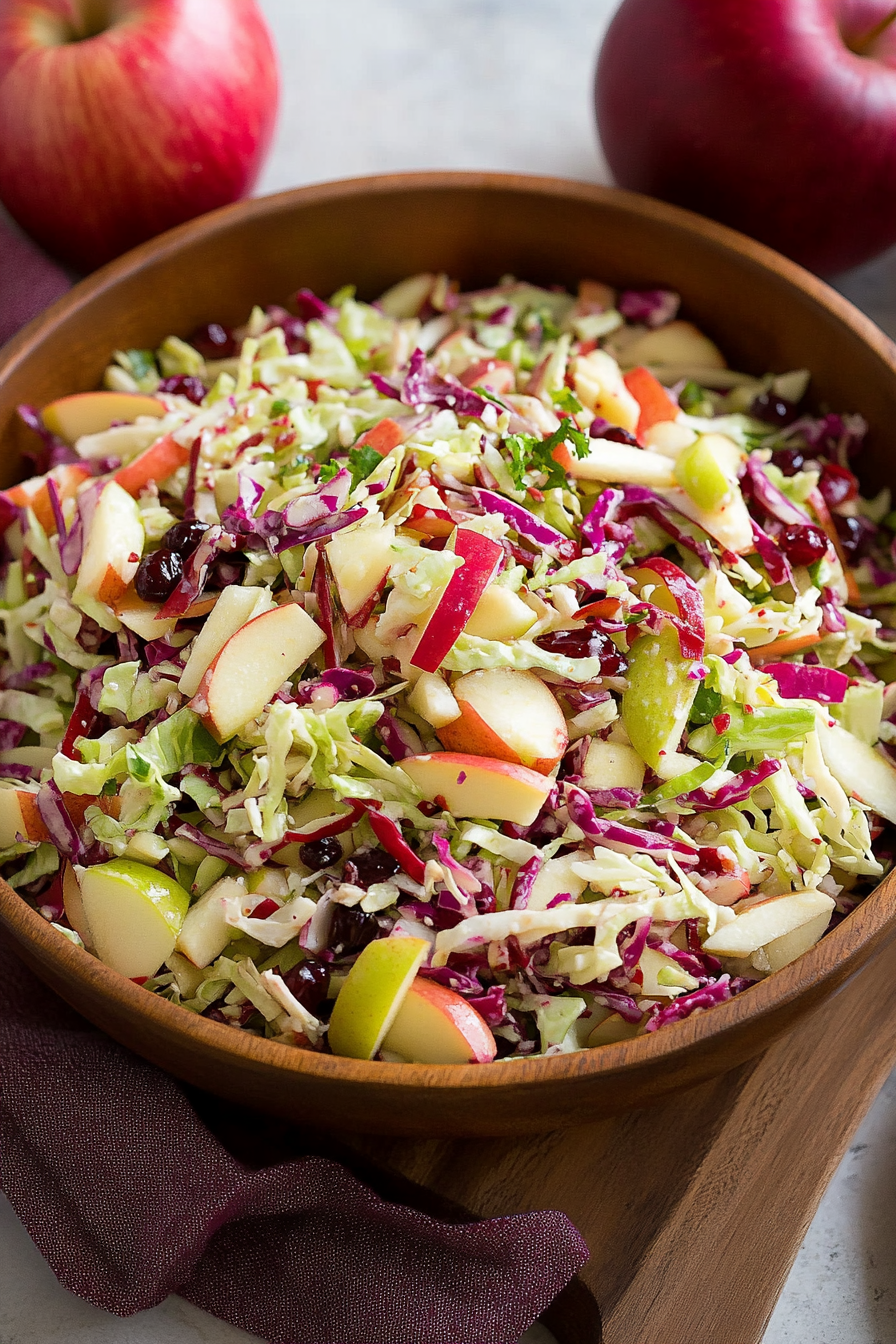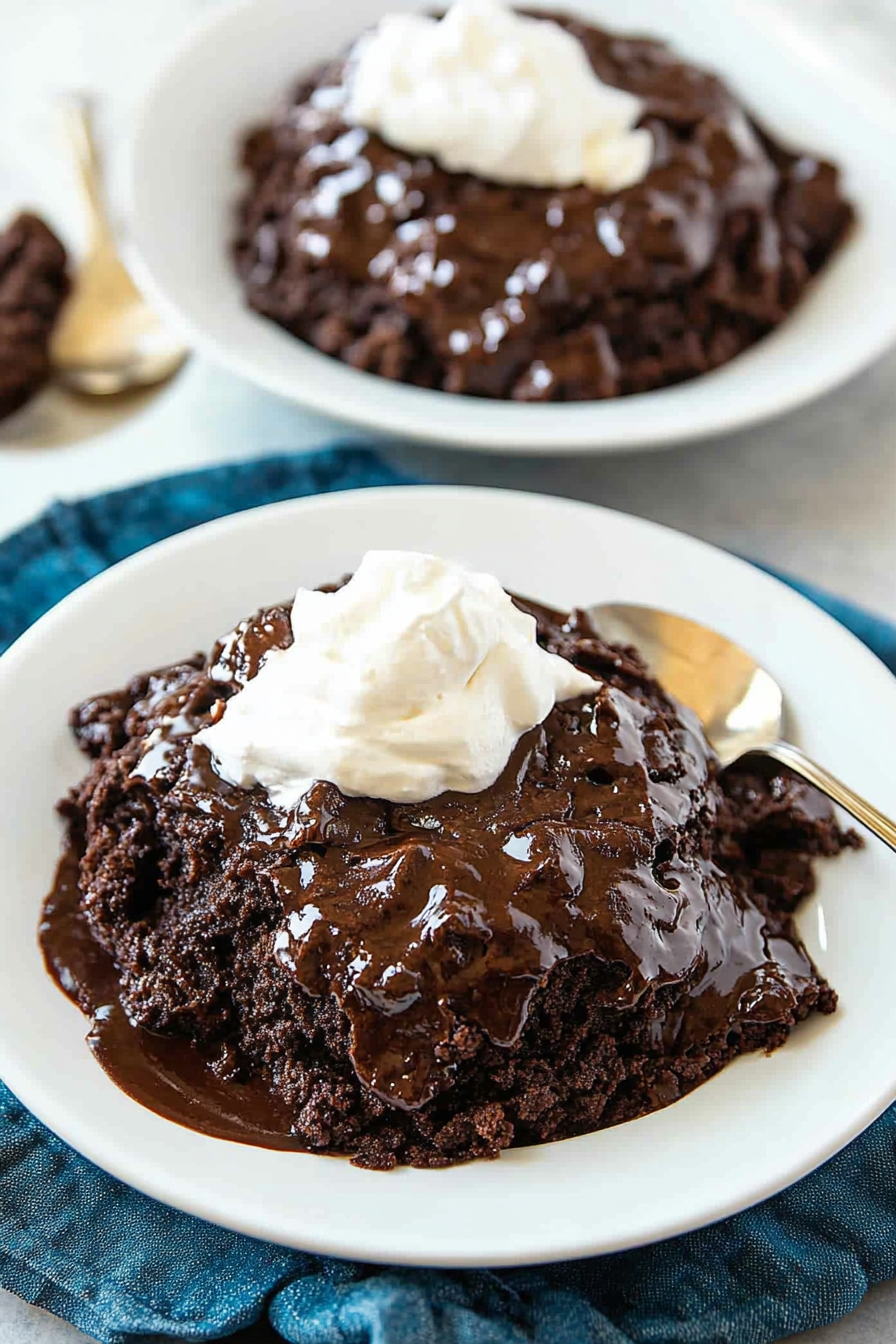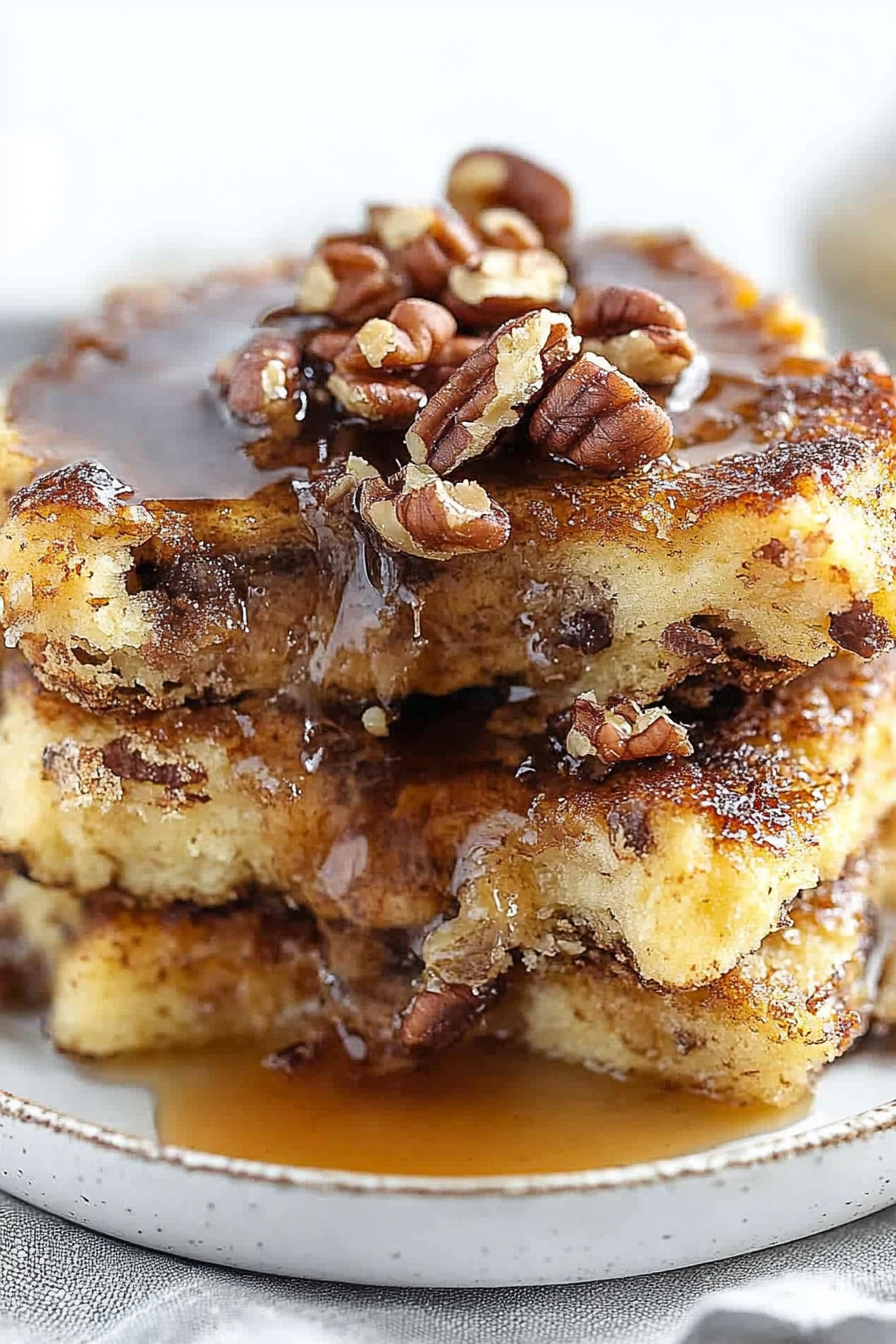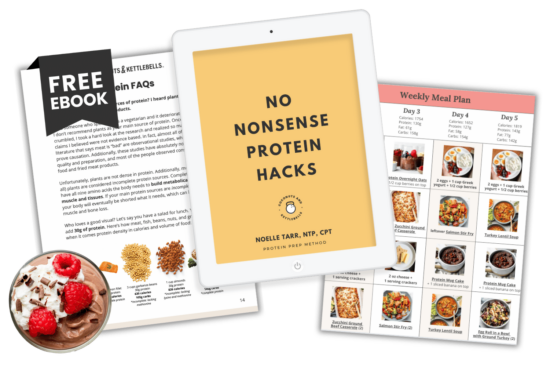I still remember the first morning my grandma announced she was making pecan french toast. The kitchen felt like a hug: butter melting in a skillet, thick slices soaking up a sunny custard, and the whole room smelling like caramelized pecans and cinnamon. It was a familiar ritual, but this version felt like a little upgrade—creamy, nutty, and somehow lighter than you’d expect for something so decadently sweet. I’ve made it countless times since, and the recipe has become one of those things I reach for when life is loud and I need a gentle, comforting moment. This pecan french toast isn’t just breakfast—it’s a memory you can taste, a cozy Sunday morning that travels with you through busy weekdays. And yes, it compares beautifully to classic cinnamon toast or regular french toast, but it’s the pecan crunch and the maple glaze that make it feel special without requiring a full brunch service. Trust me, this is the dish my kids ask for on holidays and sleepy Saturdays alike.
What is pecan french toast?
Think of pecan french toast as french toast, but upgraded with toasted pecans folded into the batter and a warm maple-cinnamon glow. It’s essentially french toast batter bathed into slices of sturdy bread—like brioche or challah—then baked or skillet-finished until the exterior is crisp and the interior stays softly custardy. The name comes from the star ingredient that adds that irresistible toasty-nut aroma: pecans. While you can absolutely fry it on the stove just like traditional french toast, baking it in a pan with a delicate filling and a glossy glaze gives you a slice that’s perfectly uniform, melt-in-your-mouth tender, and a touch fancy enough for a light celebration. It’s the kind of breakfast that feels like a warm hug, especially when you serve it with a drizzle of maple glaze and a handful of extra toasted pecans on top.
Why you’ll love this recipe?
What I love most about this pecan french toast is how forgiving it is without feeling boring. You can pull it off on a weekday morning with a little planning, or you can turn it into a weekend showstopper. The batter is rich but simple—eggs, milk, a splash of cream, vanilla, cinnamon, and a pinch of nutmeg—so it comes together in minutes. The pecans bring a toasty sweetness that pairs perfectly with maple and a hint of citrus zest if you like. It’s also generous on cost: a loaf of sturdy bread, eggs, and a handful of nuts stretch a long way, especially when you feed a crowd. I’ve found this dish to be incredibly versatile: switch the bread to a gluten-free loaf for friends who don’t eat gluten, swap in brown-sugar caramel for a deeper glaze, or add orange zest to wake up the flavor in a brunch crowd. What I love most about this recipe is how it smells before you even take a bite—the kitchen becomes a cinnamon-sugar dream that lingers long after the last slice is gone. If you’re hunting for a “made from scratch in under an hour” option that still feels special, this is it. My kids actually ask for seconds, and I always reach for this on days when I crave something sweet but don’t want to bake a cake. It’s a kitchen lifesaver that tastes like a memory you’ll want to repeat.
How do you make pecan French toast?
Quick Overview
This pecan french toast lives at two speeds: soak and bake. You whisk a rich custard, fold in toasted pecans, and soak thick bread slices until they’re fully saturated but still sturdy enough not to fall apart. Layer or swirl a cream-cheese filling for extra silk, then bake until the top is gloriously golden and the custard beneath stays soft and custardy. A glossy maple glaze finishes it off—drizzled while the dish is warm so everything glazes together in one beautiful, nutty bite. It’s forgiving, it’s cozy, and it smells like a cinnamon-adorned dream—perfect for making mornings feel special.
Ingredients
For the Main Batter:
- 6 large eggs
- 1 cup whole milk
- 1/2 cup heavy cream (optional for extra richness)
- 2 tablespoons brown sugar
- 1 teaspoon vanilla extract
- 1/2 teaspoon ground cinnamon
- A pinch of salt
- 1/4 teaspoon ground nutmeg
- 1/4 cup pure maple syrup (or honey) for a touch of sweetness
For the Filling:
- 4 oz cream cheese, softened
- 2 tablespoons powdered sugar
- 1/2 teaspoon vanilla extract
- 1/2 cup finely chopped toasted pecans (optional for texture)
- 1 tablespoon butter, melted (to bind the filling)
For the Glaze:
- 1/2 cup powdered sugar
- 2 tablespoons pure maple syrup
- 1–2 tablespoons milk or cream, as needed to reach desired drizzle consistency
- Extra chopped pecans for topping (optional)
Other Essentials:
- 8–10 slices sturdy bread ( brioche or challah works beautifully; day-old bread soaks up the custard without turning soggy)
- Butter or neutral oil for pan
- Optional: zest of 1/2 orange or lemon for a bright contrast
Step-by-Step Instructions
Step 1: Preheat & Prep Pan
Heat your oven to 350°F (175°C) and lightly butter a 9×13-inch baking dish. If you’re planning to finish the slices on the stovetop, have a large skillet warmed to medium heat with a pat of butter ready. I like to do a quick test: a tiny dab of batter should sizzle gently when it hits the pan. If you’re baking, you’ll want to bake the assembled dish later, but this step helps you stay flexible if you decide to go skillet-only.
Step 2: Mix Dry Ingredients
In a bowl, whisk together the cinnamon, nutmeg, and a pinch of salt. This ritual helps ensure every bite has that warm spice; you won’t be chasing flavors later if you start with a well-seasoned base.
Step 3: Mix Wet Ingredients
In another bowl, whisk the eggs, milk, cream (if using), maple syrup, and vanilla. A touch of citrus zest is lovely here if you’re feeling bright—it brightens the custard without turning it into a lemony mess. The mixture should be pale, glossy, and slightly thick—like a loose custard you could swim in, but in a good way.
Step 4: Combine
Pour the wet into the dry and whisk just until combined. Don’t overwork; you want to maintain a little air for a custard that sets but stays creamy. If you see a few bubbles or a few tiny lumps, that’s fine—these things happen and they don’t affect the final texture.
Step 5: Prepare Filling
In a small bowl, mix the cream cheese with powdered sugar and vanilla until smooth. If you’re not a cream-cheese person, you can skip this and swirl in a nice cinnamon-sugar mix instead. For extra flair, fold in the chopped pecans so every bite has a little crunch. Brush or brush on a light layer of melted butter and set aside while you prep the bread.
Step 6: Layer & Swirl
Dip each slice of bread in the batter for 15–20 seconds per side, or longer for bread that’s a touch drier. Lay the slices neatly in the baking dish. Spoon small dollops of the cream-cheese filling between layers and use a gentle swirl with the back of a spoon to marble the filling through the custard. If you like a stronger pecan presence, sprinkle chopped pecans between layers as you go. The goal is a pretty, marbled look with pockets of creamy sweetness and toasty-nut flavor peeking through.
Step 7: Bake
Cover the dish with foil and bake for 25 minutes, then uncover and bake another 15–20 minutes until the top is lightly browned and the custard is set in the center. If you prefer a crisper edge, you can finish under the broiler for 1–2 minutes—watch closely so nothing burns.
Step 8: Cool & Glaze
Let the bake rest for about 5–10 minutes before glazing. Whisk together the powdered sugar, maple syrup, and enough milk to reach a drizzle-worthy consistency. The glaze should be pourable but not runny. Drizzle over the warm slices so it seeps into the crevices and glazes the tops in a glossy, inviting finish. If you love extra crunch, sprinkle a few more toasted pecans on top while the glaze is still tacky.
Step 9: Slice & Serve
Slice the pan into generous squares. Serve warm with a additional maple syrup on the side and a little scoop of vanilla yogurt if you’re feeling fancy. A little dusting of cinnamon or a few orange zest ribbons makes it feel like a Sunday brunch without the fuss. The first bite should yield a perfect balance of crisp exterior, custardy interior, and the nutty snap from the pecans. It’s everything you want in a comforting breakfast—rich but not too heavy, sweet but balanced by lush dairy and bright maple.
What to Serve It With
When I’m serving this pecan french toast, I like to tailor the sides to the occasion. It’s a crowd-pleaser that shines whether you’re feeding grown-ups or hungry kids.
For Breakfast: A pot of strong coffee or a creamy latte; orange juice or a lightly sparkling beverage; a few extra slices of bread toasted with butter on the side for those who want more crunch. My mom always swears by sliced strawberries or a dollop of yogurt on the side for a little tang to cut through the sweetness.
For Brunch: A bright fruit salad, mimosas, or a flaky croissant. Plate the slices with a few fresh berries and a rosemary sprig for a restaurant-worthy finish. The cinnamon and pecan aroma makes even simple accompaniments feel special.
As Dessert: A scoop of vanilla bean ice cream or a dollop of whipped cream; a light citrus curd on the side, and a warm glaze drizzle that continues to soften the bread while you savor every bite. It’s accidental cozy dessert energy that works just as well after dinner as breakfast.
For Cozy Snacks: A mug of hot chocolate or chai—something creamy to pair with the nutty, comforting flavors. It’s the kind of dish you’ll want to nibble on while you chat late into the afternoon.
This dish has become a family tradition in our home: it’s the one we bring to friend gatherings and the one I make when I need a gentle nudge toward sweetness after a long day. A few pecans on the plate, a drizzle of glaze, and suddenly the kitchen feels like a warm hug you can share.
Top Tips for Perfecting Your Pecan French Toast
These little refinements have saved me more mornings than I can count. They won’t overhaul your process, but they’ll bring you consistently delicious results.
Bread matters: Use sturdy bread like brioche or challah, and aim for thick slices. If you only have thinner bread, you’ll need to soak longer or go with a skillet version rather than a bake to prevent sogginess. A day-old loaf is often perfect because it soaks up the custard without becoming a soggy sponge.
Toast the pecans: Toast your pecans in a dry skillet for 3–5 minutes until fragrant. This boosts flavor and prevents a soggy, greasy finish from raw nuts. If you’re short on time, toss them into the oven with the bread for a few minutes to stay busy while the batter rests.
Nutty swirls & filling: The cream cheese filling is optional but worth it if you want a silkier bite. If you skip it, you can still swirl a cinnamon-sugar mixture between layers for a similar effect. I’ve found that a light swirl leaves pockets of creamy sweetness without overwhelming the bread’s texture.
Don’t overmix the batter: A gentle whisk is enough. Overmixing can make the custard a touch dense. You want a smooth, cohesive mixture with a little air in it to keep the texture light.
Swirl patterns: For a prettier bake, add dollops of the cream-cheese filling in a grid, then swirl with a skewer or the end of a knife to create a marbled look. The marbling isn’t just pretty—it helps distribute flavor evenly through each slice.
Sweetness balance: If you’re feeding kids or prefer a less sweet finish, reduce the maple syrup by a tablespoon or two in the batter and use a lighter glaze. You can always offer extra glaze on the side for those who want more.
Oven vs. skillet finish: Baking yields even texture and a stable slice, but a quick skillet finish adds a crisp edge that many people love. If you go skillet-only, monitor closely—this can go from perfect to burnt in a flash.
Glaze as a personality: The glaze is the last, delicate touch. If you want a boozy kick, whisk in a teaspoon of orange liqueur or a splash of bourbon. If you’re keeping it kid-friendly, go with pure maple and a splash of milk for a lighter touch.
Lessons learned: I once over-sauced the glaze and it bled into the bread, making the surface a little soggy. Now I glaze just enough to gloss the surface and leave the interiors still pleasantly soft. It’s the difference between “wow” and “oh wow, that’s a lot of syrup.”
Storing and Reheating Tips
Make ahead? Yes, but with a few caveats. This dish is best enjoyed fresh, but you can save leftovers and reheat with a little care to preserve the texture and flavor.
Room Temperature: If you’re serving the day you bake, you can leave the slices loosely covered on the counter for up to 2 hours. If your room is warm, aim to refrigerate sooner to maintain texture.
Refrigerator Storage: Store leftovers in an airtight container for up to 3 days. Gently reheat in a 300–325°F oven for 8–12 minutes, or warm in a skillet over medium-low heat with a tiny splash of milk to revive the custard.
Freezer Instructions: Freeze baked pieces wrapped tightly or in a freezer-safe container for up to 1 month. Thaw overnight in the fridge and reheat slowly in the oven. If you’re freezing batter or unbaked slices, you can layer the prepared bread in a dish, cover tightly, and freeze; thaw and bake as directed.
Glaze Timing Advice: If you plan to reheat, add the glaze after warming. Warming with glaze on can cause the glaze to become tacky or runny, which isn’t as pleasing as a glossy finish on warm slices.
I’ve found that the best way to preserve flavor during storage is to keep the bread slices separate from the glaze and only glaze when you’re ready to serve. That way, the top stays crisp and the interior remains tender.
Frequently Asked Questions
Final Thoughts
This pecan french toast is the kind of dish that becomes a family favorite for a reason: it balances comfort, flavor, and a touch of elegance without demanding the whole morning. The aroma alone is enough to turn sleepy heads at the table, and the texture delivers a kiss of crispness that makes you reach for seconds. It’s not flashy, but it’s deeply satisfying—the kind of recipe you’ll recall when you’re craving something sweet and homey, and you’ll want to recreate for friends and family who sit around your table with mugs in hand. If you’re trying this and love it, I’d love to hear about your tweaks—did you swap in orange zest, or add a little espresso powder to the glaze for a mocha wink? Share your variations in the comments, rate the recipe, and don’t forget to snap a photo. Happy baking!
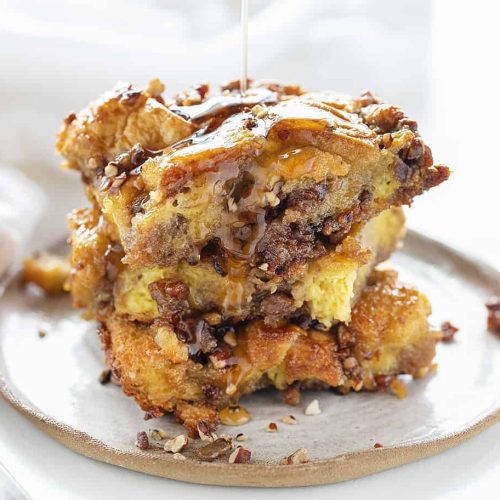
pecan french toast
Ingredients
Main Ingredients
- 6 large eggs
- 1.5 cups heavy whipping cream
- 1 tablespoon brown sugar
- 2 teaspoons vanilla extract
- 1 loaf French bread
- 1 tablespoon butter
- 0.75 cup brown sugar
- 0.5 cup maple syrup
- 0.75 cup toasted pecans, chopped
Instructions
Preparation Steps
- Preheat the oven to 350 F.
- Grease a 9x13 inch baking dish.
- Whisk eggs, heavy cream, brown sugar, and vanilla extract in a medium bowl until the sugar dissolves.
- Pour the egg mixture over the cubed bread in the baking dish.
- Cover and refrigerate for at least 4 hours or overnight.
- In a saucepan, melt the butter over medium heat. Stir in brown sugar and maple syrup until smooth. Bring to a boil, then simmer 1 minute.
- Pour the maple pecan mixture over the bread and top with chopped pecans. Bake for about 30 minutes until golden brown.
- Serve warm with additional maple syrup if desired.







